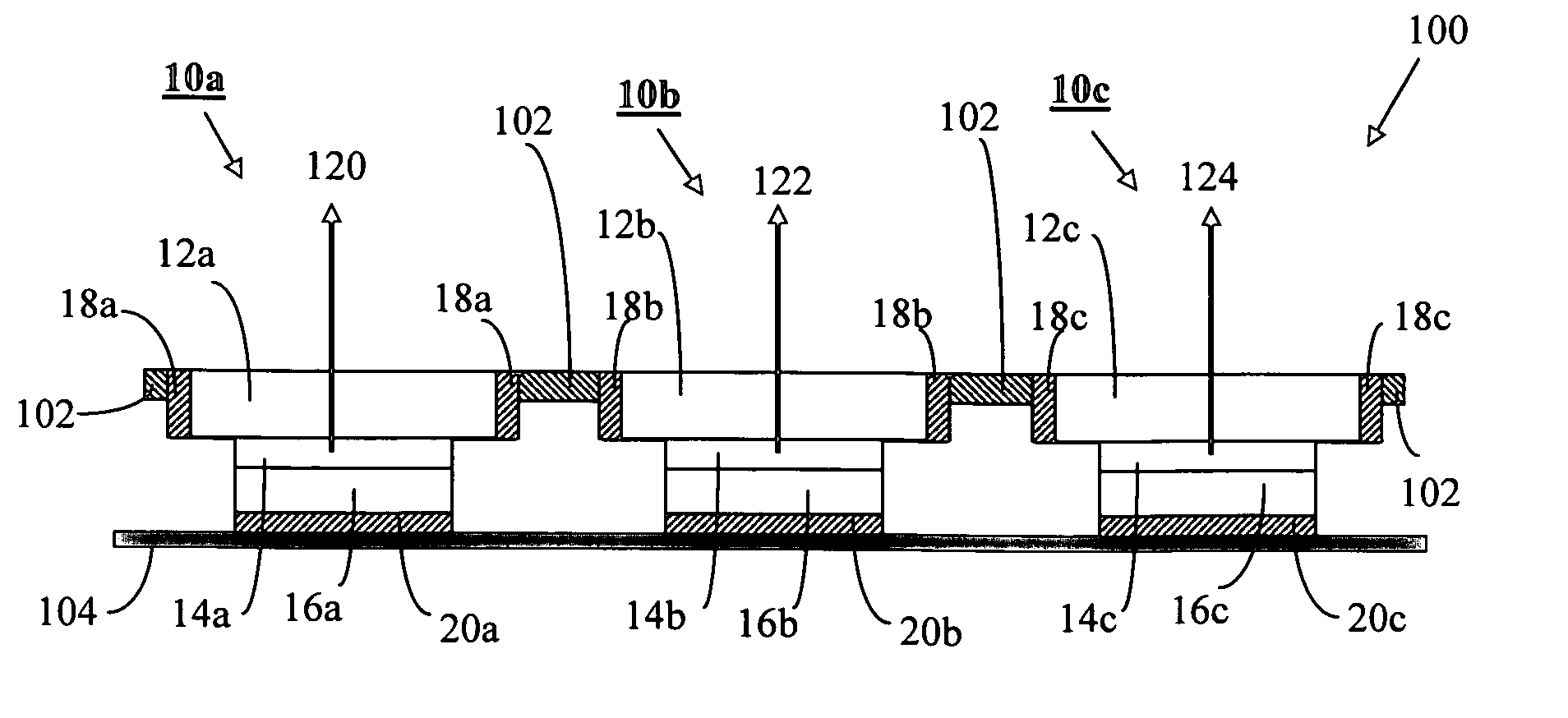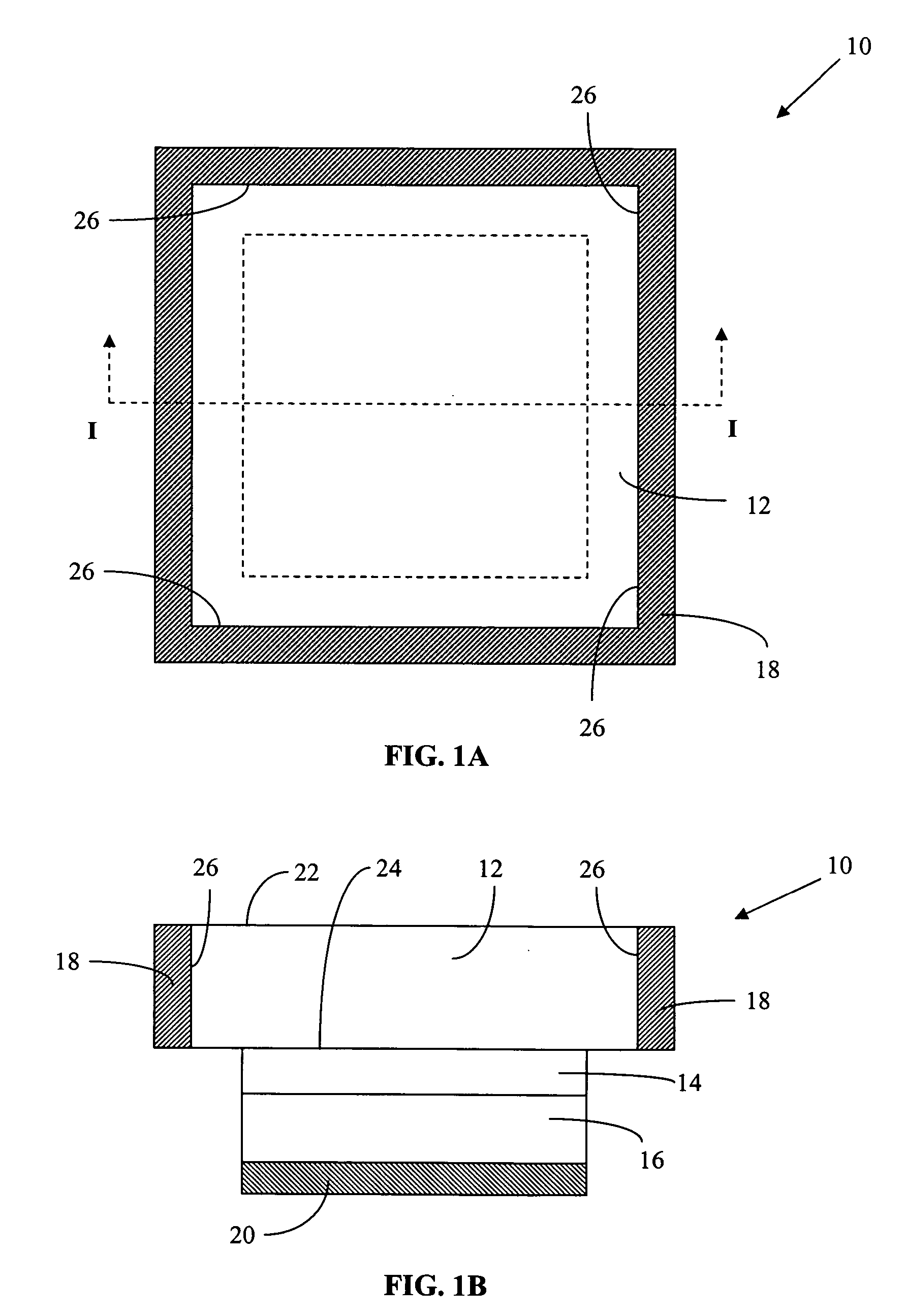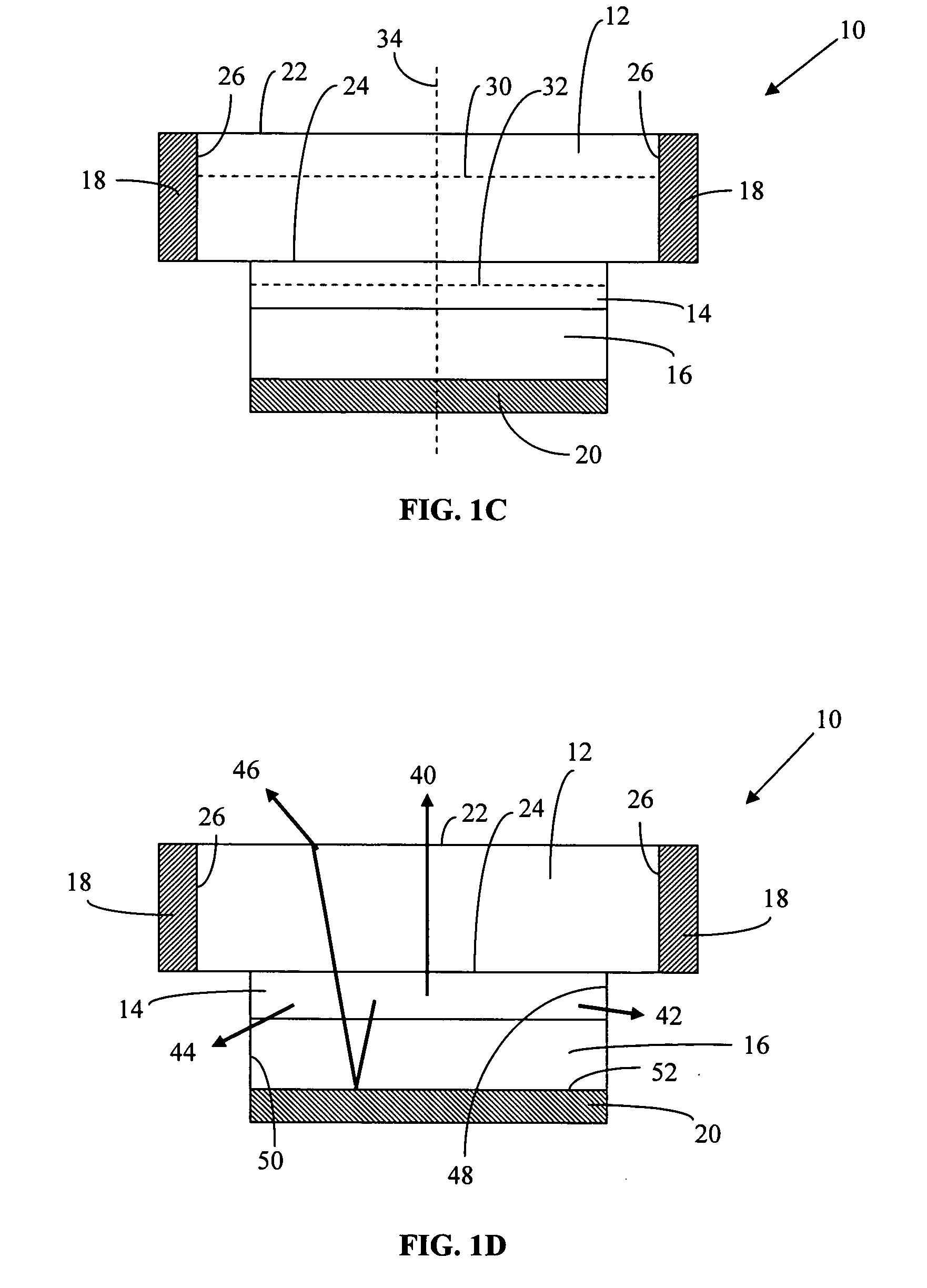Light emitting diodes and methods of fabrication
a technology of light-emitting diodes and fabrication methods, which is applied in the direction of basic electric elements, electrical apparatus, and semiconductor devices, can solve the problems of significant number of defects introduced into the semi-conducting layer, difficult subsequent processing, and high cost and limited efforts, so as to achieve real depth tolerance, prevent cracking and chipping, and be sufficiently robust
- Summary
- Abstract
- Description
- Claims
- Application Information
AI Technical Summary
Benefits of technology
Problems solved by technology
Method used
Image
Examples
Embodiment Construction
[0042] The preferred embodiments of the present invention will be better understood by those skilled in the art by reference to the above figures. The preferred embodiments of this invention illustrated in the figures are not intended to be exhaustive or to limit the invention to the precise form disclosed. The figures are chosen to describe or to best explain the principles of the invention and its applicable and practical use to thereby enable others skilled in the art to best utilize the invention.
[0043] The figures are not drawn to scale. In particular, the thickness dimension is expanded relative to the length and width dimensions in order to clearly illustrate the multiple layers of the devices.
[0044]FIGS. 1A-1D illustrate one embodiment of this invention. FIG. 1A is a plan view of light emitting diode 10 of this invention and FIGS. 1B-1D are cross-sectional views of light emitting diode 10 along the I-I plane illustrated in FIG. 1A. Light emitting diode 10 is comprised of a...
PUM
 Login to View More
Login to View More Abstract
Description
Claims
Application Information
 Login to View More
Login to View More - Generate Ideas
- Intellectual Property
- Life Sciences
- Materials
- Tech Scout
- Unparalleled Data Quality
- Higher Quality Content
- 60% Fewer Hallucinations
Browse by: Latest US Patents, China's latest patents, Technical Efficacy Thesaurus, Application Domain, Technology Topic, Popular Technical Reports.
© 2025 PatSnap. All rights reserved.Legal|Privacy policy|Modern Slavery Act Transparency Statement|Sitemap|About US| Contact US: help@patsnap.com



